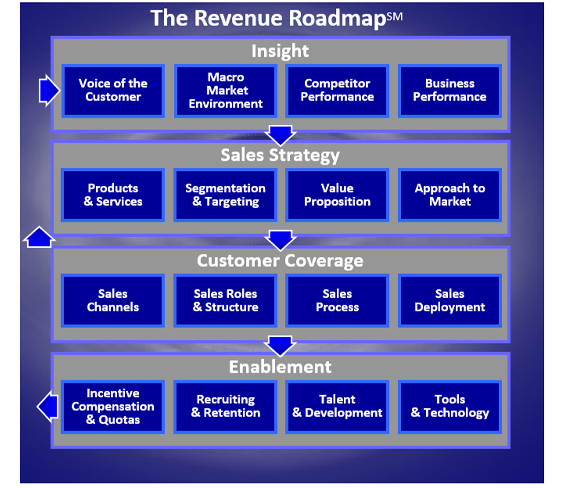13 revops best practices companies follow this year [Dashly experts edition]
Discover the RevOps formula and how it can utterly transform your company’s financial performance with insights from our experts.

Part 1: Skyrocket your revenue with a complete guide to RevOps Revenue Operations
Part 2: Beginner’s guide to RevOps tech stack
Part 3: 13 revops best practices companies follow this year
Part 4: Rev Ops vs Sales Ops: Know the difference
Part 5: 10 revops metrics and KPIs to track your revenue operations performance
Part 6: Unlocking success: the ultimate revenue growth framework
As the CEO of Dashly.io, I’ve charted my path through the dynamic world of revops. This journey has allowed me to learn from both dedicated revenue teams and innovative leaders.
My role involves developing effective business strategies. This task is rooted in understanding what accelerates growth.
Key to Dashly.io success is the client experiences and our RevOps team. This special collaboration reveals unique insights.
We’ve pinpointed that sustainable success intertwines with the right implementation. What’s crucial here? Applying revenue operations best practices.
Based on this knowledge, we’ve crafted business tips you’ve been seeking. Here, we are unveiling 13 RevOps best practices. These top-tier companies are utilizing them this year.
These are more than just suggestions. They are a clear roadmap shaped from careful study of proven results. Let’s dive into these best practices!
Short reminder on what is RevOps
Let’s bring some clarity to this buzzword: RevOps — short for Revenue Operations, is a strategic approach that aligns and synchronizes all the departments involved in the revenue process.
Casual talk, it’s the secret sauce behind driving those revenue numbers up. Sounds tempting, right? Here’s the skinny on this:
- Think of RevOps as getting everyone on the same boat. Sales, marketing, customer service, all rowing in rhythm. This unified approach? It makes us stronger and keeps us hitched to the same goal, driving revenue.
- Next up, ever struggle with departments colliding rather than collaborating? Boom! RevOps fixes that. It paves the way for those sweet revenue numbers to keep ticking up, by ensuring everyone’s working like a well-oiled machine.
- Then there’s the matter of taking your customer on a road trip they’ll love. A kickass RevOps model takes them from a casual hello to a die-hard fan. It’s about the upsell, repeat business, and good old brand loyalty.
- Lastly, it’s all about the numbers. RevOps helps us keep all our data in one place, so we can make decisions that truly boost revenue.
Investing in RevOps is like investing in a good pair of sneakers. Sure, cost you a penny now, but the miles and benefits you’ll get from them? Worth every dime. So, let’s lace up and run towards better revenue.
Understand The Current State of Your Business
As a business leader, it’s like taking a good, hard look in the mirror. You have to scrutinize what’s increasing your revenue, what needs tuning, and how you’re fairing up against your competition. From marketing strategies to the entire sales process and your customer service game, you’ve got to assess it all through the lens of revenue operations.
So here’s a cheat-sheet, some helpful questions to grill yourself with:
- What are the major variables driving your revenue right now?
- Are there any blind spots in your operations that could use a fixer-upper?
- How does your business stack up against the competition? Be brutally honest.
- Is every department, every team in your business, functioning like clockwork?
- What’s your data saying? Are there any patterns or trends that need attention?
Don’t be afraid to go back to basics here, because often, it’s the simplest questions that provoke the most profound thoughts and changes. And remember, the first step to improving your game is knowing where you stand.
Capture, utilize and democratize data
If you’re a CEO like me, you know the power of reflection. Pinpointing revenue boosters, areas begging for improvement, and stacking up against the competition — all these need your attention.
Look at your operations thoroughly. Here’s your checklist:
- Identify your revenue rainmakers.
- Spot the dents in your business machine.
- Measure up against the big dogs in your industry.
- Evaluate the well-oiled cogs of your teams.
- Make sense of the data. Spot trends that others overlook.
I get it, diving deep isn’t easy. But leaders gotta lead, right? So, get down to the fundamentals and remember, the road to success starts with knowing where you tread.
We’ve all heard the saying — “Data is the new oil.” But let’s be honest, we’re just skimming off the surface here. So much of precious data goes uncaptured, slipping through the cracks in our operations. This missed data means missed opportunities! So, recognize this gap and grab ’em.
Ben Stroup from Velocity Strategy Solutions shares three ways to leverage data:
1. Capture the data
Simplify your tech stack. Get a system that corrals missing revenue data. Remember, it’s necessary to have technology that binds all your teams together, not just isolated systems for marketing or sales. Consistent data management forms sturdy grounds for profound conversations and insights.
2. Democratize data access
Don’t bottle up your data with just a selection of analysts. Share it with all types — the number crunchers and the creatives alike. This blasts through traditional silos, and trust me, it’ll be a gamechanger.
3. Upgrade non-quantitative analysis skills
Data’s no good if it isn’t understood. Train your folks to decipher real-time data, so they can anticipate and react to fluctuations. When the whole team harnesses this power, it’s a win for the customer and a win for us.
In today’s rapidly changing business landscape, every bit of insight matters. So let’s pump up our data game, shall we?
Think about revenue goals in metrics that you want to drive
It’s easy to lose sight of what’s driving your business. We aren’t just talking figures here; we’re focusing on how these numbers intertwine with our revenue goals and objectives.
Got your processes, both macro and micro, in order? Good. Now, align them with metrics that measure their health and effectiveness. A few common metrics include conversion rate, customer turnover, deal velocity, and others. But, here’s the tip — it’s not about strictly adhering to these. It’s about identifying which metrics are pivotal for your business growth and tuning your processes to enhance them.
One metric could be the conversion rate from free trial to paid customers. Another could be the average deal size. Or the customer acquisition cost. The right metric will shed light on where to invest resources and where to trim.
Now, to make this ride smooth, remember the three main types of key metrics:
Read also: 10 revenue operations metrics and kpis to track
- Operational Metrics: These numbers tell you how well your day-to-day processes are running. They help keep tabs on individual teams, departments, and overall efficiency of your operations.
- Tactical Metrics: Focus on these to understand how your strategies are performing. Are the new marketing initiatives increasing leads? Is the sales pipeline filling up faster? These metrics will answer these questions.
- Strategic Metrics: These big-picture metrics help assess how you’re doing in relation to your company’s revenue goals and strategic objectives. If you’re serious about long-term success, focus your sights on these.
Think of these metrics as tools in your CEO toolkit. Use them wisely and you’ll have at your disposal a myriad of insights to optimize your revenue operations and drive growth.
With these insights, CEOs can lean into their strength — strategy. This means taking data-driven decisions, steering away from gut feelings, and setting up a ship that sails smoothly and sustainably. Quite a game changer, right?
By using leading indicators in performance scorecard, you can:
- Have a clear view of what activities lead to success
- Review activity data and align behavior to strategy
- Get an early insight into risks
Track user behavior to make data-driven decisions and grow revenue of your marketing campaigns 👇

Create a driving revenue roadmap
Consider it as your to-the-point, unambiguous guide steering through the labyrinth of revenue generation.
This roadmap shouldn’t just be about the numbers. It should connect teams, strategies, and goals, giving everyone a clear sense of direction.
Here is how it may look:

At Dashly, we’ve created a RevOps strategy that unites the whole cycle: from curious site visitor to a satisfied, returning customer. Here’s how:
- Attract: Strategic content and SEO tactics draw visitors to our site.
- Engage: Once on board, we deploy personalized messaging and live chats to engage them further.
- Convert: Showcasing value in conversations nudge the prospects to take the leap.
- Retain and Upsell: Here, our customer success team steps in, ensuring the product exceeds expectations and encourages repeat purchases.
Setting a roadmap like this for your business will outline the trajectory of every prospect, giving each team a clear understanding of their role in it. So grab your RevOps squad and start charting your personalized roadmap to success!
Establishing a RevOps leader
Think about why you, as a CEO managing your site, need a RevOps leader in your corner. It’s about crafting a winning symphony out of your marketing, sales, and customer success teams. This maestro aligns goals, streamlines strategies, and strikes the right chords to keep everyone playing in sync with the RevOps strategy.
Their role doesn’t end at creating harmony. It stretches to booting efficiencies, changing the game by identifying site process pain-points. As they bulldoze the roadblocks, they introduce smoother, more effective workflows that increase productivity.
Simply put, a RevOps leader is the maestro of your revenue orchestra.
- They finesse sales, marketing, and customer success teams into harmonic alignment, optimizing processes to create a lively and effective revenue rhythm.
- They’re champions at identifying avenues for improvement, streamlining workflows, and sharpening how your teams work together. Their toolbox? Harnessing data insights to understand customer success, sales performance, and more, to make strategies that truly hit the mark.
- Also, imagine them fine-tuning your tech stack to ensure flawless communication across systems, making data serve the present needs of the site neatly. They envision the future with revenue forecasts, analyze past performance, and guide strategies with these learned insights.
- Lastly, they foster healthy collaboration, creating a work environment that’s as smooth as a well-rehearsed symphony within the RevOps strategy.
So, a RevOps leader? They’re the maestro ensuring your revenue teams play a harmonious symphony that resonates with growth and success.
Design a RevOps team structure
The right revenue operations team is crucial as it serves as the backbone of a company’s revenue growth strategy. This team ensures alignment across all revenue-related departments, including sales, marketing, and customer success. They optimize processes, eliminate roadblocks, and create a seamless customer journey, which directly influences customer retention and acquisition.
The correct RevOps team turns your company’s revenue-generating efforts into a well-oiled, synchronized machine.
I’m proud how we at Dashly built rocking revenue operations team. Here are some best practices to whip your team into shape:
- Vision Alignment: Ensure everyone understands and buys into your company’s vision of revenue growth.
- Right Structure: Understand the roles you need. In our Dashly team, we have:
- RevOps Director: Overseeing the development and execution of RevOps strategies.
- Operations Managers (for Sales, Marketing, Customer Success): Each specializes in optimizing the operations of their respective department.
- Data Analysts: Juggling numbers and generating reports that aid decision-making.
- Training: Invest in regular training programmes to keep the team updated with the latest tools and techniques.
- Collaboration: Foster an environment that encourages open communication and collaboration among the team members.
Remember, a revenue operations team is not just another unit — it’s the hub of your growth engine. Well-structured and synergy-driven, your RevOps team can surge your business to new heights of success. Assemble them right, and they’ll soar!
Read also:
- What is sales enablement? Definite guide + Strategy + Tools for 2024
- How to measure success: 20+ sales enablement metrics to track in 2024
- Harnessing the power of AI sales enablement: 5 strategies to transform your sales process
- 10 steps to building a sales enablement strategy in 2024
- 7-steps guide on how to create an automated sales funnel in 2024: examples & tools
- 7 sales enablement best practices to empower your team and boost performance
- 10 sales enablement tools: Best software to grow your team performance
- Guide on sales enablement team structure: 10 roles and responsibilities
- Mastering sales automation: A comprehensive guide to best practices and tools
- Sales and marketing automation: How to align their workflow to 2x revenue [Dashly example]
- Top 13 sales automation tools to propel your sales strategy
Ensure all teams have the same qualified data
As a CEO, I’ve learned the importance of cross-functional collaboration in uncertain markets. Data is the glue that binds it all together. However, traps of data siloes in key departments like sales, marketing, and customer success are common.
A striking statistic shows that 44% of companies lose over 10% of annual revenue due to poor data quality.
Multiple versions of the same data and varying interpretations can create chaos and block the path to a smooth buyer journey.
My take on the RevOps best practice revolves around creating a unified understanding of data for all revenue-generating departments. This unity is built on leadership buy-in and effective communication.
Our approach: feed insights from across the revenue stack back into the system with sturdy collaboration as our cornerstone.
Implementing a data orchestration strategy has been instrumental in achieving this. It:
- Promotes a better cross-functional understanding of data
- Creates a common data dictionary
- Improves data quality
In essence, we’ve carved a common language around data for all teams, ramping up their effectiveness.
To sum up, the right practices make all the difference. They morph revenue operations into a growth driver and a game-changer.

Read also: Building growth marketing team: 3 rules and 5 must-have roles
Align All Departments
A key insight I’ve gathered is the necessity to cultivate robust relationships with all stakeholders within the revenue process. This includes, but isn’t limited to,
- sales,
- marketing,
- customer success,
- product development,
- finance,
- and also our executive leadership.
These relationships are the driving force in securing alignment and gaining necessary buy-in for our RevOps strategies.
A company that is all in on revenue operations should ensure each department aligns with one another. Knowing if all company departments are on the same page about Revenue Operations (RevOps) can be determined by observing the following signs:
- Consistency in Goals. If all departments are sharing and working towards common, company-wide objectives and key results, this could signify an understanding and adoption of RevOps principles.
- Regular Inter-Departmental Communication. Regular meetings and conversations between departments to update, discuss, and resolve issues are a sign of robust alignment.
- Smooth Handoffs. Smooth transitions with minimal friction when leads, projects, or tasks move from one department to another is a positive sign.
- Decreased Operational Conflicts. If operational issues or conflicts between departments decrease and everyone collaborates to solve complexities, this indicates a positive alignment on RevOps.
- Increase in Overall Efficiency. A boost in overall productivity and efficiency, with all departments operating in harmony, denotes that all are on the same page regarding RevOps.
- Data-Driven Culture. If there’s a shared understanding of metrics and data across departments, and everyone is utilizing this information for decision making, it shows good alignment on the concept of RevOps.
- Customer Satisfaction. Enhanced customer satisfaction and experience due to seamless cross-departmental operations shows that all departments have embraced RevOps.
Remember, these are potential signs of alignment. Regular check-ins and open dialogue will help maintain this alignment over time.
Read also: Guide to hacking your product led growth marketing
Establishing clear communication channels
Steering a dynamic organization, it’s clear that communication is pivotal for productive revenue-generating collaborations. Establishing agile communication channels ensures everyone stays updated.
Here’s how I’ve approached facilitating effective communication:
- Foster regular interactions across departments like marketing, sales, and customer success. It cultivates a sense of unity and purpose.
- Implement shared dashboards. They provide a clear view of the team’s performance metrics, revealing improvement areas and helping track targets.
- Incorporate a streamlined messaging channel. This tool enables instantaneous information transfer, enhancing team communication efficiency.
Mastering these changes improved our operations and customer experiences. Clear communication and transparent data have been game-changers, triggering considerable revenue growth. These small but powerful changes can indeed yield extensive results.
Practice Data-Driven Decision Making
A recent example from the Dashly revops team journey can vividly illustrate the implementation of data-driven decision-making in Revenue Operations (RevOps).
We noticed our sales and marketing efforts weren’t converging as effectively as hoped — our teams had been operating somewhat independently, leading to potential leads falling through the cracks in the handoff stage. The issue had resulted in lost opportunities and was impacting our conversions.
To address this, we turned to a data-driven approach:
- Centralize Data: We synchronized data from sales and marketing into a unified platform, effectively creating a single source of truth. This step improved our understanding of the customer journey from initial engagement to conversion.
- Identify Key Metrics: Our RevOps team highlighted critical metrics that truly represented our goals, such as lead conversion rates and return on marketing investment.
- Analysis and Insights: Detailed data analysis unearthed bottlenecks in our operations, which were previously overlooked. Based on these insights, we could adjust our strategies and improve the lead hand-off process between marketing and sales.
- Iterate and Improve: We continued to monitor these metrics, learning and improving our operations. We established a regular cadence of data review to ensure our strategies stay effective and relevant.
This data-driven strategy helped my business significantly improve lead handling and conversions, directly boosting overall revenue and making our marketing and sales processes more efficient.
Make data-driven decisions and boost your business growth and revenue with Dashly

RevOps best practices for documentation
Pivoting towards fostering a culture of documentation has been transformative in our journey of growth. If you’re initiating this journey, here are some of my nuggets from experience:
- Board Buy-In: Rally your leadership about the importance of documentation; it’s a key pillar supporting the scalability of your success. Highlight its benefits within context they value, speak their language.
- Team Perspective: Walk your teams through how documentation can up their efficiency game. Imagine not having to remember every process in detail — it’s liberating, isn’t it? It makes training their successors seamless and could even pave the way for additional resources.
- Newbie Onboarding: Make revops documentation a must-do in the onboarding process. Encourage new hires to go through relevant materials, interact with the RevOps team, and maybe a quiz or badge to make it fun!
- Simplicity is Key: Don’t complicate the process of creating and updating documentation. Let’s avoid the “Not me” scenario; clear ownership can dodge that bullet. Be strategic, not mere cleaners!
If you’re the first Ops person onboard and starting on a clean slate, don’t let the “documentation debt” bother you. Document the current use of primary tools like HubSpot, gain insights into usage across different teams, and make that info easily accessible.
Read also: A secret collection of growth marketing tools
Continuously improve processes based on data
There was a case in Dashly when we noticed an increasing customer churn rate. It is negatively impacting our revenue. The first step was to figure out why this was happening, so our RevOps team dove into the data.
Upon analysis, it was discovered that a significant number of customers were dropping off after their initial interaction with our customer support team. Understanding this data point allowed us to scrutinize our support process. We used customer feedback and support interaction records to identify that response times were longer than industry standard, and this was causing customer dissatisfaction.
Armed with these insights, our RevOps team strategized a process improvement plan that included the following:
- Additional training sessions were organized to enhance efficiency and the ability to resolve issues faster.
- We implemented a new customer support platform that streamlined ticketing and improved the accuracy of response times.
- Key Performance Indicators were set for response and resolution times to stay competitive in our industry.
Use Revenue Operations Software to automate processes
Utilizing Revenue Operations Software can greatly simplify and automate processes.
- First, choose a comprehensive RevOps platform that integrates with your existing tools and systems.The platform will consolidate data across departments, reducing the risk of silos.
- Next, automate repetitive tasks like data entry, ticketing, and routine reporting, freeing up team members for high-value tasks. For instance, you can set up automations to send follow-up emails or update CRM records after a sales call.
- Lastly, use the software’s analytics capabilities to continuously monitor and improve your processes. With the right insights, you can further streamline operations or automate new areas, enhancing efficiency and revenue growth.
Software not only streamlines revenue operations, but also empowers teams with time and insights to focus on strategic efforts.
Read also: Beginner’s Guide To RevOps Tech Stack
Making RevOps work for your organization
In the wrong environment and without intention, a centralized RevOps team can lead to too much oversight, slower execution, and bottlenecks. But if you can mitigate those risks with a thoughtful approach, RevOps can become the true heartbeat of your GTM organization, unlocking opportunities for better alignment across your org and simplifying processes for managing customer relationships.
Track user behavior to make data-driven decisions and grow revenue of your marketing campaigns 👇

FAQ on revenue operations best practices
What is the core principle of RevOps best practices?
The central principle is to align all revenue-related functions (marketing, sales, and customer success) to work seamlessly towards the common goal of revenue growth.
How can cross-functional teams contribute to effective RevOps?
Cross-functional teams can enhance RevOps by establishing transparent communication, sharing goals, and collaborating on strategies, thus ensuring a harmonious and efficient revenue-generating mechanism.
What is the first step in implementing RevOps best practices?
A successful first step is typically the consolidation of all customer-related data into a unified platform to ensure everyone has access to similar, real-time information.
How do we measure the success of our RevOps?
Success is usually measured by analyzing key metrics like sales cycle length, lead conversion rate, customer churn rate, and ultimately, revenue growth.
How can RevOps best practices improve our customer interactions?
RevOps practices can synchronize your teams’ efforts to create a consistent and enhanced customer experience across their journey.
How does a data-driven approach enhance RevOps?
A data-driven approach in RevOps allows for fact-based decisions, helping identify operational bottlenecks, areas of improvement and opportunities for growth — making your strategies tightly aligned with realities.
Read also:
- 25 Growth Marketing Books to Skyrocket Success
- B2B growth marketing: accelerating business success
- 22 SaaS growth hack Facebook tactics to boost your business
- Growth marketing newsletter: 18 expert digests for regular insights
- Revenue operations metrics: 10 metrics and KPIs to track your performance
- Sales led growth: what is it and why your business needs it
- Growth marketing case studies: 12 stories with detailed tactics and numbers achieved
- Top 10 product led growth software your competitors use in 2023
- 10 product led growth companies that boost their development right now



![The ultimate guide to growth marketing in 2025 [explained by a growth hacker]](https://www.dashly.io/blog/wp-content/uploads/2023/04/The-ultimate-guide-to-growth-marketing-explained-by-a-growth-hacker-720x317.png)
![Ultimate guide to creating a successful marketing growth strategy in 2025 [6 real-life examples]](https://www.dashly.io/blog/wp-content/uploads/2023/05/Expert-guide-to-creating-marketing-growth-strategy-6-examples-720x317.png)